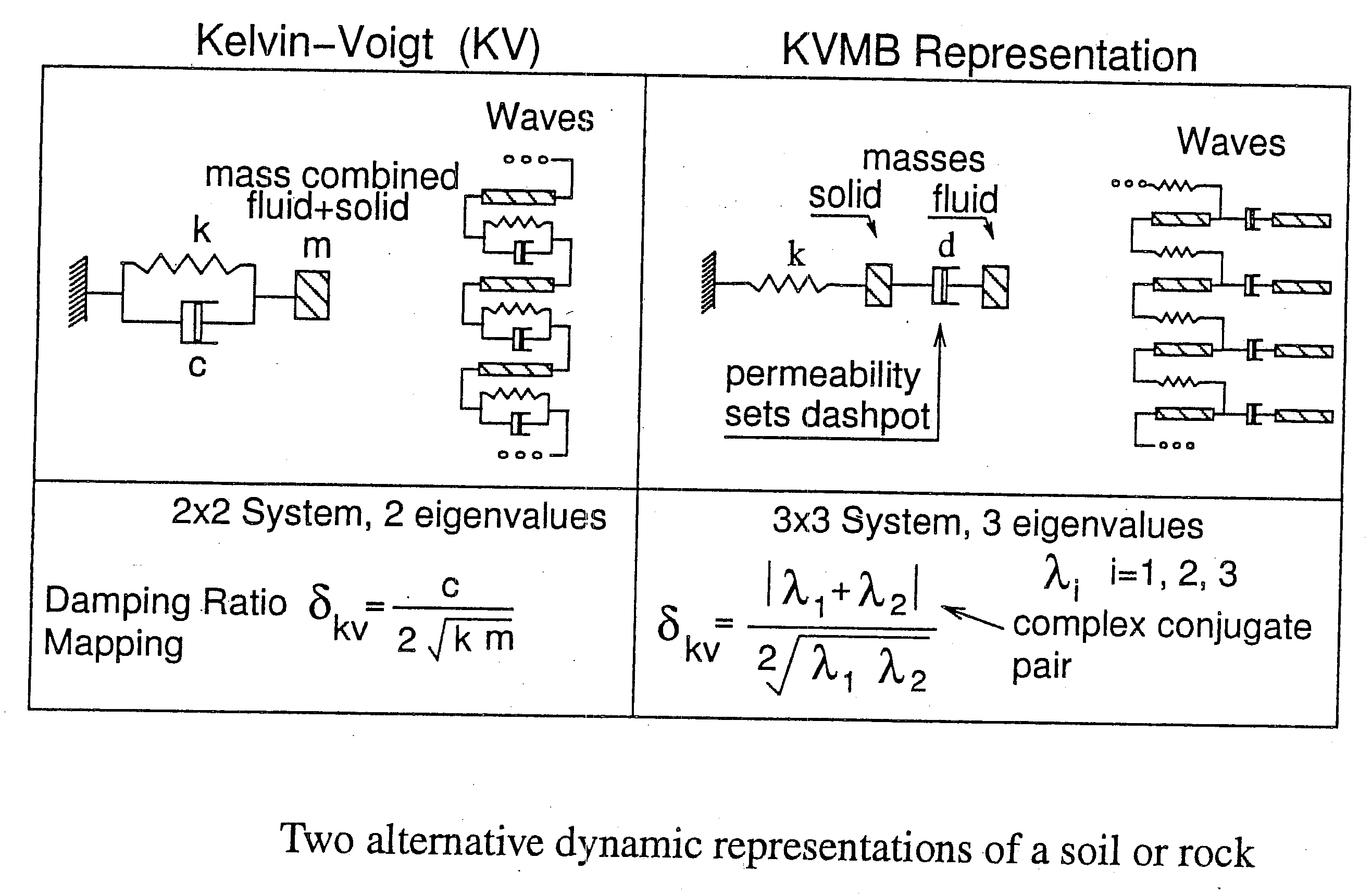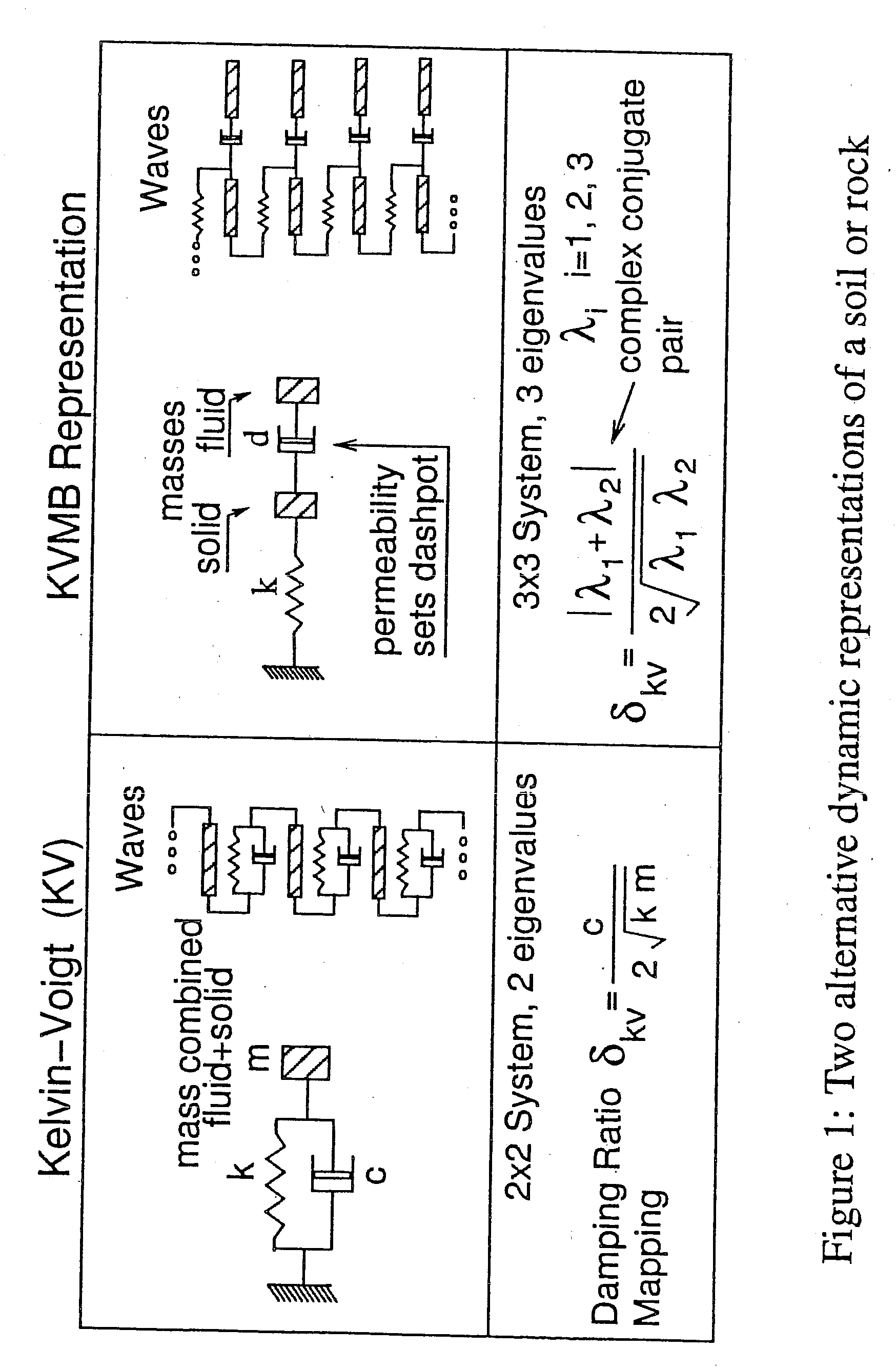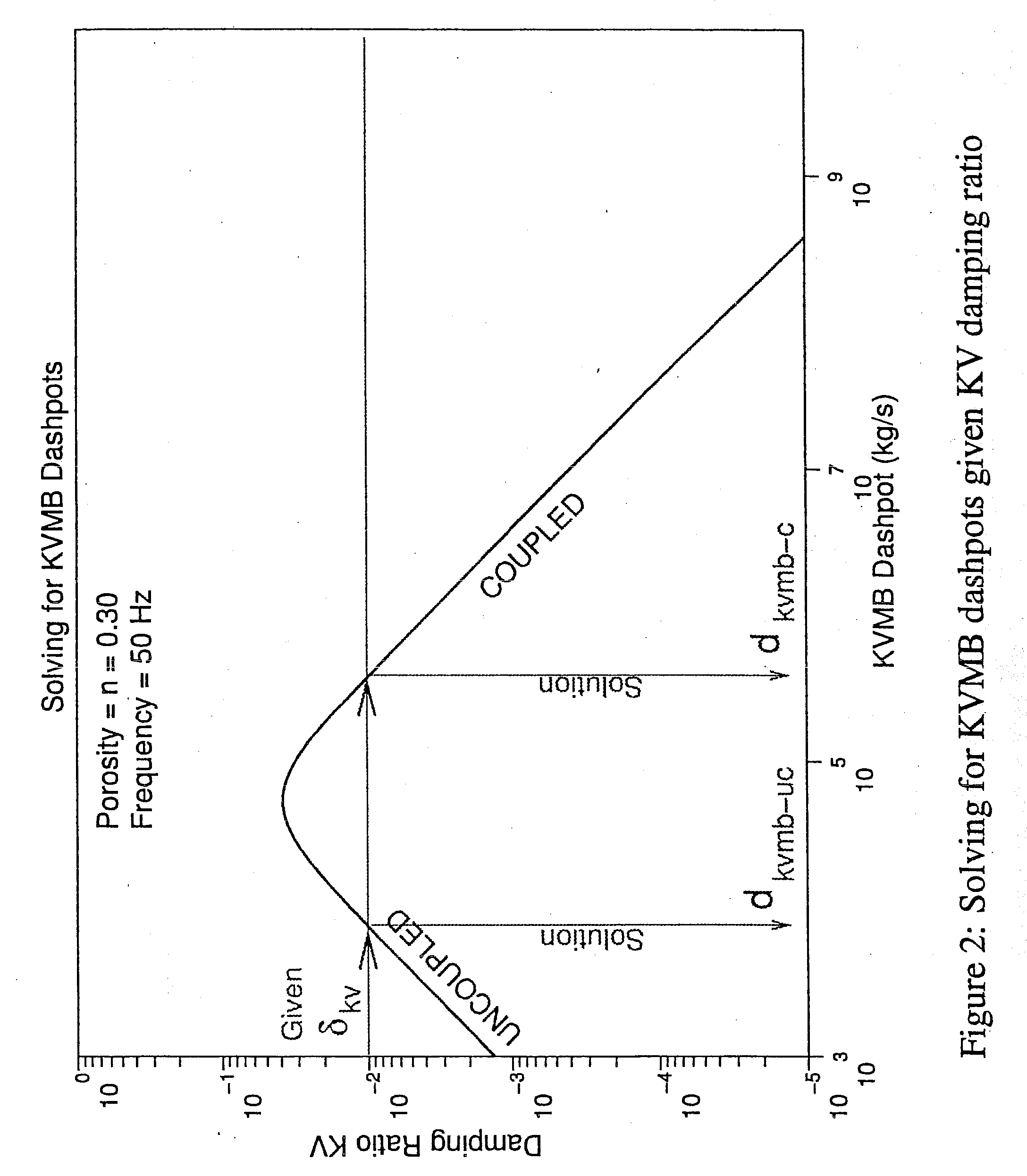Determination of permeability from damping
a technology of permeability and determination method, applied in the direction of fluid tightness measurement, instruments, structural/machine measurement, etc., can solve the problems of inability to evaluate large samples, limited laboratory testing, and current non-seismic methods of permeability determination
- Summary
- Abstract
- Description
- Claims
- Application Information
AI Technical Summary
Benefits of technology
Problems solved by technology
Method used
Image
Examples
example a
[0134]A method for determining in-situ stiffiness and damping has been presented. The method is to jointly invert both measurements of SH-wave velocity dispersion and spatial amplitude decay, corrected for beam divergence. The method is consistent with current engineering practice and uses a Kelvin / Voigt constitutive model. The field examples presented here demonstrate that the method works in practice. Furthermore, the current use of the Kelvin-Voigt model in engineering (where pore water is present) is supported by these in situ determinations.
[0135]Since damping will increase the wave velocity, it is possible to introduce significant errors by computing shear modulus from wave velocity alone. It has been common practice to compute the shear modulus from measurements of the dominant group velocity of SH-waves. This is like measuring only the resonant frequency in a spring / mass / dashpot experiment, and then computing the spring constant without consideration of any damping effects.
[...
example b
[0180]The following symbols are used in this paper.
[0181]A=cross-sectional area of soil element in thought experiment (m2);
[0182]b=Biot dissipation coefficient (kg / s m3);
[0183]c=dashpot constant for KV model (kg / s);
[0184]d=dashpot constant for KVMB model (kg / s);
[0185]f=friction factor in a cylindrical pore (unitless);
[0186]fn=natural cyclic frequency of soil element (Hz);
[0187]Gf=shear modulus of frame (Pa);
[0188]Gs=specific gravity of soil solids (unitless);
[0189]g=acceleration due to gravity (9.81 m / s2);
[0190]hf=head loss in a cylindrical pore (m);
[0191]Kd=hydraulic conductivity (m / s);
[0192]k=KV spring (N / m);
[0193]k=absolute permeability M2);
[0194]kf=spring constant of frame (N / m);
[0195]L=length of soil element in thought experiment (m);
[0196]m=KV mass (kg);
[0197]mf=frame mass for KVMB model (kg);
[0198]mw=water mass for KVMB model (kg);
[0199]n=porosity (unitless);
[0200]R=Reynolds number for flow in a cylindrical pore (unitless);
[0201]t=time (s);
[0202]u=particle displacement of KV ...
PUM
 Login to View More
Login to View More Abstract
Description
Claims
Application Information
 Login to View More
Login to View More - R&D
- Intellectual Property
- Life Sciences
- Materials
- Tech Scout
- Unparalleled Data Quality
- Higher Quality Content
- 60% Fewer Hallucinations
Browse by: Latest US Patents, China's latest patents, Technical Efficacy Thesaurus, Application Domain, Technology Topic, Popular Technical Reports.
© 2025 PatSnap. All rights reserved.Legal|Privacy policy|Modern Slavery Act Transparency Statement|Sitemap|About US| Contact US: help@patsnap.com



